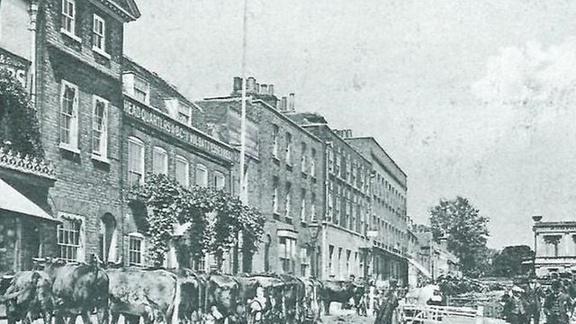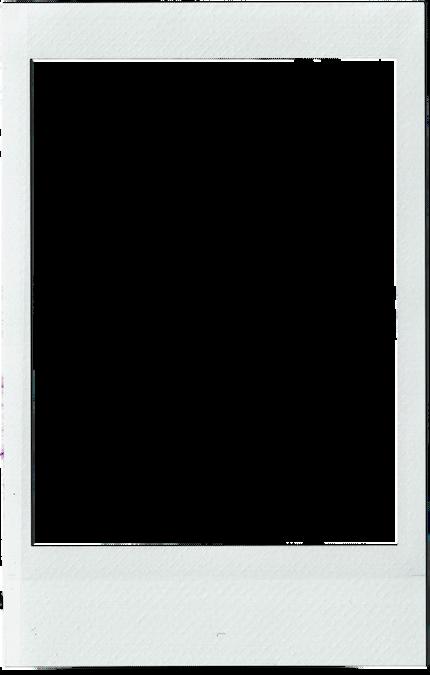THEHISTORY OFROMFORD MARKET





























































12 47
Romford’smarketdatesbackto1247andthereignofHenryIII whereitisrecordedintheCloseRolls(acopyoflegallettersand agreementsmadebythemonarch)
HenryIIIgrantedpermissiontoholdanannualfairduringthe weekofPentecost.
It’sworthrecognisinghowimportanthavingamarketwas.There wereveryfewpermanentshopsandcraftspeopleandtraders tendedtoliveatthepremiseswheretheyworked.Ifyouwantedto buyorsellanythingatthistime,amarketwastheplacetogo, withthefair,heldonceayear,attractingpeoplefromfurther afield.
“Concerningtheholdingofamarket-ItisorderedthattheHigh SheriffofEssex,shallproclaimpubliclythroughouthiscountyand itshundreds,theestablishmentofandholdingofamarketat RomfordonWednesdays,withallthelibertiesandcustoms belongingtothesaidmarket.” 12 50
AMarketforRomfordestablisheditasakeytradingcentre servingaverywideareaandenabledthelocaleconomytoflourish. 12 74
Romford market encouraged trade and expanded the commercial economy of Havering. By 1274 tenants of the Manor of Havering, owned by the Crown, had freedom from payment of tolls, not just in Romford but in all markets throughout the kingdom, though the constable of the Castle in Ongar refused to stop taking tolls from “the king’s tenants of Havering” despite royal instructions. 13 50
By 1350 Romford market was well established as a supplier of goods to London which were difficult to transport very far, such as fattened animals and wood. Most craftsmen sold their own wares directly to customers with few people working solely as sellers.
Themarketwascentraltothelocaleconomybutwasalsousedby othersfromoutsidethemanorofHavering.InthisperiodaLondon vintner,butchersfromBarkingandBrentwoodandapoultry dealerfromLondonbroughtgoodstosell.Mostofthestockraised inHaveringwassoldtoLondonbutchersatRomfordmarketwith salesofcattle,calvesandsheepmostcommon.Thosesellingwould usuallyagreetodrivetheanimalstoLondononthehooforbycart. Woolwastheotherkeycommoditysoldtooutsidetraders.
14 AND 15 CENTURIES
InJanuary1393JohnMokkeofOrsettdroveadozenlambsthe12 milestothemarketandagreedasalewithaLondonbutcher, ThomasFelawewhofailedtopaythe9s.Themarketattracted visitorswhocameespeciallytobuyparticulargoods,suchasthe Brentwoodmanwhopurchasedshoes.TheLondoncraftsmenwho cametotheWednesdaymarketweren’talwayswelcomebythe localtradesmen,andtherewasoftenconflictwithLondonbutchers whohadstallsinRomford.
Throughoutthe14thand15thcenturiesRomfordmarketwasthe centreformuchofHavering’stradeandalsoservedasafocalpoint forruraldistrictstochanneltheirgoodstoLondon.
Theopenmarketplacelayatawideningofthemainroadto LondonfromColchesterandwasaround400yardsby50yards.It becamesurroundedbyshops,alehousesandinnsaswellas houses.Inthe1390smostoftheshopswereownedbylocalpeople butbythemidfifteenthcenturyseveralofthesehadchanged handswithtradesmenandwomenfromelsewhere.Stallsfor tradersandpensforanimalswereerectedonmarketdays.
AgreementsforsalesmadeatRomfordMarketwereunderthe jurisdictionoftheHaveringManorCourtwhichwouldenforce payment,qualitystandardsanddeliveryonevidenceofverbalor writtencontracts.
15 50S
HenryIVgrantedpermissionforanewchurchtobebuiltin Romford.Bythistimethetown’scentrehadmovedtotheMarket Place.Thenewchurch,dedicatedtoStEdwardtheConfessor,was consecratedin1410,onanewsiteintheMarketPlace.Thenew heartofthetownwasestablished
RomfordMarketsawlocaltradersbeginningtoactasmiddlemen forlocalproducersanditalsodevelopedasaconvenienttrading pointforoutsidersfromplacesevenfurtherafield.Atypical examplebeingthesaleof“sixgreatweysofcheese”byWilliam HalleofStondontoRobertHatterofLeicestershirein1479.
Regulationofthemarketwasmoreactivelypursuedbythe HaveringCourtfollowingtheestablishmentoftheLibertyof Haveringin1465.Theclerkofthemarketwaselectedannually by1489.Theclerkwouldattendthemarketandoverseethe officialweightsandmeasuresandcouldpenaliseoffendersonthe spot,thoughtheyusuallyreportedthemtothecourtfor punishment.Thecourtpenalisedthosewho“soldunhealthyfood, begantradingbeforethemarketbellrangattheeighthhouror blockedthemarketareawithwoodorotherobstacles”.
AmarketwasintroducedonTuesdays,specialisinginthesaleof animals,whilsttheWednesdaymarkethandledgrainandother goods.TheWednesdaymarketacquiredthelocalname“meal market”.Grainwascommonlysoldbylocaltradersaswellasmalt, thoughoatsandbarleywerelesscommon.Clothandcraftswere availableonWednesdays.
Leathergoodswereparticularlyabundant,aresultoftheheavy concentrationofleatherworkersinHornchurchandatHareStreet. Stallsweresetasideforgloversandshoemakersandnearbyshops existedforotheritems.Thetownbecameknownforitsleather breechesandacommonsayingarose"gotoRomfordtobenew bottomed." Cont...
15 50S 15 93
TherubbishandanimalwasteaccumulatedbytheMarketwasa constantproblem.Therewerefinesfordumpingmanure,straw andclayandthoselivingnexttothemarketwereorderedto removepilesoftimberandoldsignstopreventtheroadbeing blocked.
Thewashingofclothesintheopenmarketespeciallyattheopen wellwasprohibitedandin1557theHaveringcourtmadeitillegal tothrowanimalcarcassesintostreamsandpublicways.In1571 and1576butcherswereorderednottothrow“lezentrailsorblood ofanimals”intothestreets.
15 94
The clerk of the market allocated stalls and animal pens which filled the market place. In 1593 the manor court ordered that “for better rule and governance of the market at Romford, no pedlars, petty chapmen, or cutlers should henceforth ‘have any standing’ between the stairs leading to the loft of the market/court house and the door of the Greyhound inn”. By the mid seventeenth century there were separate sections for butchers, shoemakers, glovers and smiths.
15 99
In 1594 John Norden described Romford as having ‘a pretie market on the Wednesdaye yeldinge store of corn and swyne’ .
In1599WilliamKemp,Shakespeare’scomicactorspenttwodays restingatalocalinnduringhis9daysMorrisdancefromLondon toNorwich.
ThomasMiddleton’sAChasteMaidinCheapsideof1613 contraststhepoorqualityofaWelshwoman’sdowryof2,000runt cattlewiththehighqualityofhogssoldatRomfordMarket “UnlesstheyshouldbeRomfordhogs,Iknowthemnot”
16 19
16 31
16 36
16 40S
16 50
Market tolls and rents were leased from James I for 99 years by Trustees for the Prince of Wales, later Charles I at a cost of 40s per year. As a result, the first evidence of tolls being collected is found in 1619, though outsiders had paid before this date.
17 21
The Trustees sold the Market lease to John Edisbury of the Inner Temple in London and the lease thereafter changed hands many times in the 17th century.
John Taylor, “The Water Poet”, said of the market:
‘It is a sweet, savoury, clean and gainful market for hogs and all sorts of swine and what else is needful for man’s life. It hath these taverns, the Angel, the Bell, the White Hart and the Cocke.’
A toll of 2d per head of cattle sold in the market was collected alongside a charge for bushels sold.Stalls cost 6 to 12d per day for butchers and 2-3d for those who sold pre-made goods or other food. Animal pens cost 6d per day.
1650ItwassaidthatrentsfromRomfordMarketwouldhavebeen £100exceptforthefactoflocaltenantsbeingexemptfrompaying tollsandrents.
Towardstheendofthe17thCenturyRomfordwasdescribedas“a greatmarkettownforcornandcattle”
TheMiddlesexandEssexTurnpikeTrustwasestablishedanda tollhouseandgatewaserectedattheeasternendoftheMarket Place.
1772 TO 1793
18 24
18 28
ThemainleaseoftheMarketwaspurchasedbyMrsAnne FreemanofBoreham.From1793until1813,theMarkettolls wereleasedonanannualbasis.
Aplanofthemarketplacewasmadein1824andatthistimemost ofthemarketwasreservedforcattle.
In1828theManorofHaveringwassoldbyTheCrowntoHugh McIntoshwhoinJanuary1829paid£4,700forthemarkettolls whichatthetimewerepartthewaythrougha31yearleasetaken upin1813byCharlesWilloughby.
“Agoodlookingyoungwoman,wifeofThomasNewcombe,towhom shehadbeenmarriedonlyonemonth,waslastweekbroughtto RomfordMarketinahalter,andsoldbypublicauctionfor5s6d. withtheadditionof6dforthenewropetowhichshewastiedtothe post.Inthissalethecustomarymarketfeesweredischarged–viz tolltwo-pence,pitchingthreepence.”
Thiswasn’tanisolatedincident,theEssexStandardof26thMay 1832reportedamanfromCollierofferinghiswifeandoneofhis childrenforsalealongwithhalfofthehouseholdfurniture.“The woman,bywayofappearingincharacter,hadahaltertiedround herwaist.Inashorttimethelotwaspurchasedbyafellownamed DanielHarding,whoappearedpleasedwithhisbargainandwith whomtheladywenttohernewabode”.
Weknowoftheseincidencesbecausetheywerereportedin newspapersandmoreoutrightjudgementisfoundinthisEssex Heraldreportof5thMarch1839.
DISGRACEFULSCENE–Oneofthosedisgustingexhibitions whichareoccasionallywitnessedinthiscountry-thesaleofawifetookplaceinRomfordmarketonWednesdaylast.Twomenand twowomen,inacabandaonehorsechaise,droveuptotheKing’s HeadInn,andhavingorderedsomewineandwater,sentforthe crier,andrequestedhimtoannouncethatamanwasgoingtosell hiswifeinthepublicmarket.Shewasaccordinglytakenout,witha halteraroundherneck,andsoldbyauctionfor14s!Our correspondenthasnotinformedusofthenameofthehighestbidder.
Thereismoretothisdegradingspectaclethanmeetstheeye.The saleofwivesatmarketwasnotentirelyuncommonandwasoften ameansofobtainingaseparation,andagreedbythewife.Divorce wasgrantedbyParliamentonlyforadultery.Wivescouldonly initiateadivorceBilliftheadulterywascompoundedbylifethreateningcruelty.Becauseofthehighcosts,onlythewealthy couldaffordthismethodofendingamarriage.Thesecrudesalesat Marketwereusedasaformofdivorcebythosewhohadno realisticmeansofobtainingalegaldivorce.
18 50
OnSeptember19th1850anewChurchofSt.Edwardthe ConfessorwasconsecratedbytheLordBishopofRochester,the 1410buildinghavingbeendemolishedin1849.Thechurch remainsaconstantpresenceinthestoryofRomfordMarket.
Orr'sKentishJournalof19thOctober1861reportedthatallofthe marketstallswere“entirelynew”andthattheownerofthe Market,DavidMcIntoshplannedtospendbetween£2,000and £3,000onimprovements.
“Theoldpensetc.aretocomedownandbereplacedwithnewones, considerablequantitiesofthematerialsforwhichhavealready arrived…andwhichconsistentirelyofmetal.Thepositionofthe pens,stallsetc.foralltheanimalswillalsobere-arranged,and altogetheritisanticipatedthatwheneverythingiscompleted Romfordwillpossessamarketwhichwillprovequiteamodel,as regardscleanliness,neatnessandconvenience”
18 64
StonesStore
FormuchofitshistoryRomfordMarkethasbeenaboutmorethan themarketplainasshopsdevelopedonitsedgesandcraftsmen soughttotakeadvantageoftheregularcustomguaranteedtovisit thetown.
Thetown’smostsignificantshopinthelatenineteenthandearly twentiethcenturywasStones.Itwasstartedat62MarketPlace byDennyStonein1864andhegraduallyextendedthepremises intoadjoiningshops.
Stoneswasthebiggestshopintownby1906.In1959,withplans foranewstoreunderway,theymergedwithDebenhams,though thenewbuildingopenedasStonesin1963.
18 76
1879 TO 1887
TheeasternendoftheMarketPlacewasusedforpigsandcattle andthewesternendforfarmtools,clothing,fruitandvegetables andwasconsideredtobethelargestneartoLondonforcornand cattle.
AfterthedeathofDavidMcIntoshin1879,theRomfordLocal Boardmadeanumberofunsuccessfulattemptstoleasethemarket tollsfromMrsMcIntosh,hiswidow.
MrsMcIntoshinstalledaweighbridgeinthemarketandalegal disputeaboutitslocationwiththeLocalBoardensued.TheLocal Boardarguedthatthelocationinterferedwiththepublicrightof way.MrsMcIntosh,complyingwiththeMarketandFairsAct (WeighingofCattle)byerectingtheweighingmachinewonthe legalcaseandproceededtoaddabrickbuiltweighhouse,a buildingdemolishedbytheLocalBoardassoonasitwasableto.
The Local Board turned down the lease of the market tolls saying that the market was in decline.
InFebruary1892theBoardofAgricultureorderedMrsMcIntosh tocarryoutworksofpavinganddrainageinthemarketwhichshe decidednottodo.AsaresulttheBoardofAgricultureorderedthe closureofthemarketwhichcausedgreatdistressinthetown.Ata publicmeetingheldonFebruary18th1892itwasdecidedtobuy themarketrights.ThiscosttheRomfordLocalBoardofHealth £7,000plustheexpenseofcarryingouttheworkrequiredbythe BoardofAgriculture.RomfordMarkethasbeenownedbythe Councileversince.
Towardstheendofthe19thcentury,theTuesdaymarketwas discontinued.
InMay1900crowdsgatheredintheMarketPlaceoutsidethe ChurchofStEdwardtheConfessortocelebratethenewsofthe ReliefoftheSiegeofMafekingduringtheSecondBoerWar.
NewsreachedRomford“soonafterhalfpastnineonFriday(18th May1900)…Crowdsofpeopleassembledinthestreetsandcheered andsang.”ThisisprobablyfromMonday21stMaywhen schoolchildren“marched…withflagsandbanners flying”.“Practicallythewholetowncametolookon”
ASaturdaymarketwasintroduced. 19 07
Romford Market stallage rents were reduced to 1 shilling per stall owing to the large number of vacant stalls.
R
TheMarketcontinuedthroughoutthewar,andwasthesceneof manytypicalconcerns.
Anti-Germanfeelingranhigh.On15thApril1915TheBlucher’s Head,namedintributetothePrussianGeneral,anallyinthe NapoleonicWars,waschangedtoTheDukeofWellington.
Onthe12thMay1915AntiGermanfeelingintheMarketwas stronglyexpressedbyRichardHilliard,thewell-knownauctioneer whomadeanannouncementattheopeningofthecattlemarket that“hewishedtomakeitclearthatiftherewereanyGerman buyers,naturalisedorun-naturalised,presenthehopedtheywould retire,asheshouldcertainlynottaketheirbids.Hethenreada statementfromtheButchers’Association‘DonotallowGerman memberstocomefromSmithfieldtoyou.’’.MrHilliard’sremarks weremetwithloudcheering”.
Therewereseveralrecruitmentmeetingsheldinthemarket,for example.
19thJune1915AlargecrowdassembledintheMarketPlace RomfordforameetingtorecruitforanewbattalionoftheKing’s RoyalRiflesbeingraisedbyCaptainSirHerbertRaphael,which wouldbeknownastheArtsandCraftsBattalion.
ThecostoflivingwasamajorconcernandtheMarketwasafocal pointformeetingsandprotest.
12thJuly1915AmeetingorganisedbytheRomfordBranchof theIndependentLabourPartywasheldinRomfordMarketPlace toprotestagainstthehighcostofliving.MrEdwardFletcher presidedand“urgedthattherewasnorealnecessityfortheincrease offoodpricesandthatthecostoflivinghadincreasedowingtothe actionofthosewhosoughttomakeextraprofitoutoftheconditions broughtaboutbythewar”.
18thOctober1916ThepriceofwheatreportedfromtheCorn Exchange,Romfordrosefrom66sto68sperquarterofdryred wheat.Manyfarmerswerereluctanttosellatthatprice.There werealsoreportsfromelsewhereof“startling”risesinthepriceof potatoes.
Afterthewar,in1919ADailyMarketbegan.
Romfordprovidesaninterestingsnapshotofthecharacterofthe MarketaftertheFirstWorldWar.
“Thequestionofcontinuanceofthecattlemarketwithallthe movementofbeastswhichitimplies,onanareacloselyborderinga mainroadwhichhasbecomeasfulloffastmovingtrafficasthe presentLondon-ChelmsfordRoadisaproblembyitself…Butitis nottothat…thatIamalluding.Notmanymonthsago,partlyinthe interestsofex-Servicemenandpartlybecauseofthehighprices,it wasagreedtofavourthesettingupofanumberofadditionalstalls which…itwasthoughtmightbenefitcertain,mostlylocal individuals,whileintroducinghealthycompetitionwiththe permanentshops…Butwhathashappened,andishappening?All dayWednesday,andalargepartofSaturday,thelowerpartof theMarketisfilledwithacrowd,onlyatenthofwhomhavecome onanyrealmarketbusiness,whiletherestaregatheredroundhalf adozen‘cheapJacks’,whocompetewitheachotherintheloudness oftheirvociferations,thecharacteroftheirgoodsetc.The tradesmenwhohaveratesandrentstopayandreputationsto maintain,naturallysufferbutareperhapsafraidtocomplain,the legitimatestallholderssuffer,thoughinlessdegree,thepublic suffer,astheydiscoverlateronaftertheyhaveentrustedtheir moneytotheseplausiblegentlemen.Theresidentsinthemarket sufferfromtheintolerabledin,thevoicesbeingeasilyheardin JunctionRoad…”
Rev.BellcalledontheMarketCommitteeto“considersomemeans ofregulatingthelicencesgiventostallholders,inthedirectionof excluding(oratleastmakingitveryexpensivefor)thosewhocome fromoutsidetheareaoftheoldLibertyofHaveringforwhichthe marketwasoriginallyintended,andofabsolutelyprohibitingthe callingoutofwaresinstentorianvoices”
Saw the end of daily markets but Friday was retained alongside the existing Wednesday and Saturday markets.
The1930ssawthelivestockmarketenteraslowperiodofdecline, mostnoticeablyinhorsesales,whichby1939weredownto25. Theoveralllivestocksalesin1939were:
Cattle4,147
Calves1,580
Sheep19,435
Pigs12,367
Horses25
Onereasonforthedeclineofhorsesaleswastheriseofthemotor car.BusesreplacedtheoldcoacheswhichhadconnectedRomford withLondonandelsewhereforcenturies
Romford Market had, as one historian has written, “the greatest notoriety”, for the black market during the Second World War. Tic-tac men, out of work due to the restrictions on horse racing, were employed by some stallholders to look out for inspectors but this wasn’t always successful.In March 1942 a female inspector eluded the look outs and joined a crowd around a stall where they purchased clothes without coupons. Despite heavy fines there was little deterrent and the trade without coupons continued as stallholders rushed to sell as fast as they could.
The last sale of horses at Romford Market took place on 13th May 1948.
Afterthewarthelivestockmarketdeclinedmarkedlyuntil1958 whenRomfordBoroughCouncilwasforcedtoabandonitshistoric cattlemarket.Thelastlivestocksaletookplaceon21stMay1958 wherethefollowingweresold:
Cattle,7
Calves10
Sheep28
Pigs53
19 59
Since1959adedicatedteamofmarketcleanershasbeenemployed todotheirworkafterthemarketcloses.
19 60
ThereweremassivechangesinRomfordduringthe1960sasthe largelyVictoriantownembracedthemodernerawithplansfora ringroadandanewshoppingcentreonthewesternsideofthe MarketPlace.
S
19 69
TheMarketitselffacedcompetitionfromthenewshoppingcentre, newstoresforDebenhamsandC&A,andanexpandedRomford ShoppingHall.Therewasalsoalongrunningdisputebetweenthe CouncilandBarrowBoystradingattheMarket.InSeptember 1964apetitionwithover5,000signatureswaspresentedtothe HomeSecretary,byadeputationwhowalkedthe18milesthere, claimingthatthe1247“charter”gavethemtherighttotradefrom theirbarrowsandthatthecouncilshouldbepreventedfromfining them.
19 73
OnSundaySeptember14th1969RomfordMarketwasclosedto throughtraffic.Thiswasoncepartofthemainroadbetween LondonandNorwich.
Acrowdofnearly5,000peoplecametoshareintheformalclosing ceremonywhichfollowedtheMayorandMayoressofHavering makingthefinaljourneyonahorsedrawnlandau.TheRomford DrumandTrumpetCorpsperformedasdidtheRomfordMorris Menandlocaltheatricalgroupsappearedincostumewhilstthe crowdstoodtowatchvintagevehicles.
In1973therewerearound325regulartradersinthemarket.19 97
INTO THE 21 CENTURY
ST
TheendofthetwentiethcenturysawRomfordMarketcontinueas amajordestinationforshoppersseekingabargain.Duringthisera thetraditionalmarketfacedthechallengeofoutoftownshopping centresbutremainedavenueforshopperstravellingfromfarand wide.DavidEldridge’scelebratedplay,“MarketBoy”,first performedin2006,reflectshisexperiencesworkingonastallin themarketasateenager.
AnantiquesmarketwasintroducedinNorthStreetinthe1980s.
In1997majorcelebrationstookplaceinthetowntomarkthe 750thanniversaryofRomfordMarket.ThroughoutJune1997a programmeofexhibitions,events,talks,afunfair,musicand themedmarketdayssuchasthedemonstrationoftraditional tradesmenataMediaevalMarkettookplace.Boxer,FrankBruno launchedproceedingswhichconcludedwiththeRomfordCarnival onSaturday28thJuneandontheSunday,acivicserviceof thanksgivingatStEdward’sChurchandaGreatHistoricPageant.
20 03
Asurveyin2000notedthatthemajorityofthosewhoresponded valuedthemarketandtheuniquecharacterandtraditionitgives thetown.
20 12
On 6th March 2003 Queen Elizabeth II became the first reigning monarch to pay an official visit to Havering since Charles I. Her visit to the district included a trip to Romford Market where she admired the stalls, spoke to stallholders and met the public. Until 1828 Romford Market was part of the Crown estates.
The Olympic Torch relay of 2012 marked its arrival in Havering along the old London Road from Chadwell Heath with Romford Market as its destination and the first changeover of torch bearers.
The announcement on 24th March 2020 that the Market would be closed until further notice due to Covid-19, led to the longest recorded closure of the Market in its history. It finally re-opened in two phases, on Wednesday 3rd June 2020 food stalls opened up with the remaining stalls returning on Friday 5th June. The open air nature of the Market making it a safer shopping environment during a difficult time for everyone.

The Market has always been populated by characters, often with nicknames. Kie-Kie the tool king, Clarkie the Banana Man, Gertie from Lancashire, Little Freezer, Jack the Shoe Man. Stalls have often been associated with several generations and longstanding stallholders in the Market such as Nellie Sims, Charlie Fancourt and latterly Tony Luscombe and they will be remembered into the future.
Throughout its history Romford Market has faced difficulties and challenges but remains very much part of Romford’s identity and has continued to develop and adapt.Occasional Specialist and Farmer’s Markets have taken place and Romford Market still attracts coach parties during the run up to Christmas when extra days are added. Recently a Sunday Market was launched and it remains the focal point for events of a joyous and mournful nature.
There are few sights and sounds in Romford as colourful as a sunny day in Romford Market. The buildings, shops and many of the pubs and inns on the market’s perimeter have come and gone whilst the Market remains, still a place to claim a bargain and listen for the echoes of its long history.
A 2001 report recognised the importance of the market to the town and the borough of Havering and highlighted one shopper’s view that “The Market is Romford”.
The market is still thriving today, with many small businesses trading four days a week. Come and visit us every Wednesday, Friday, Saturday and Sunday from 9am.